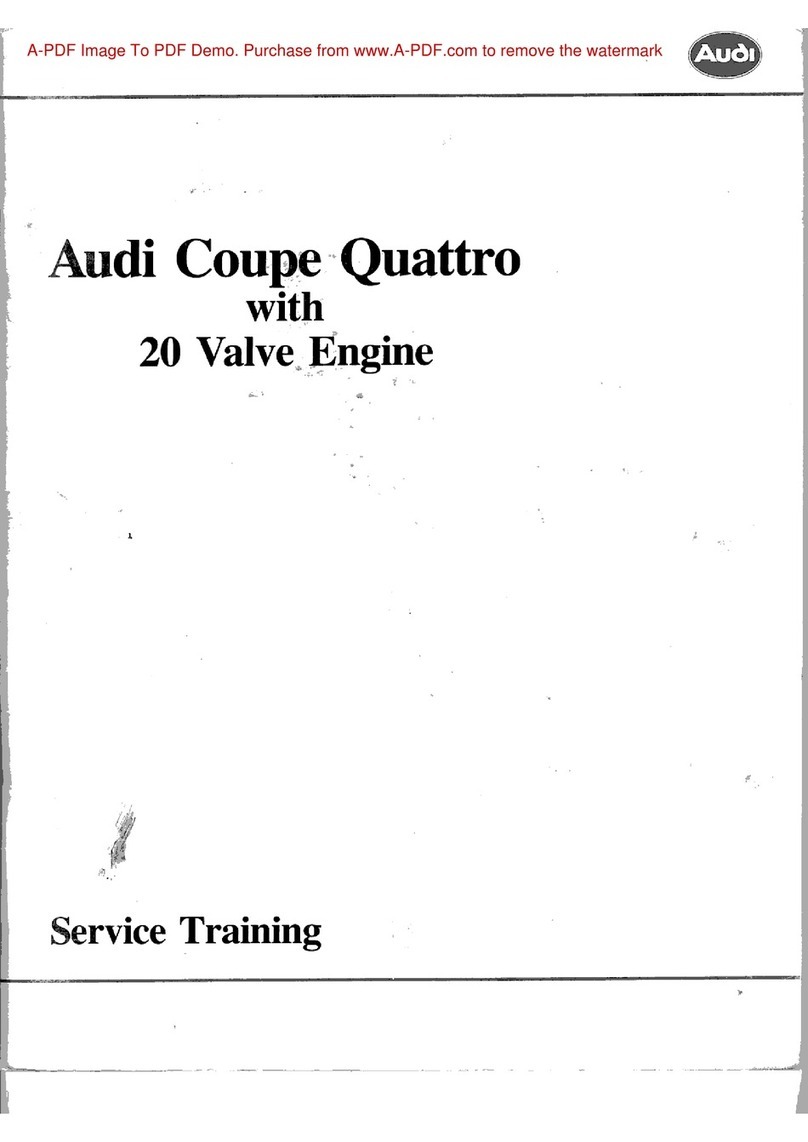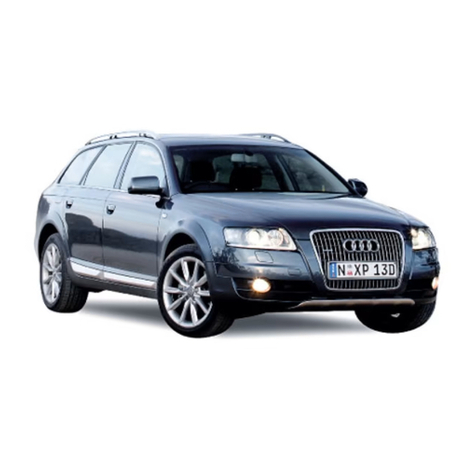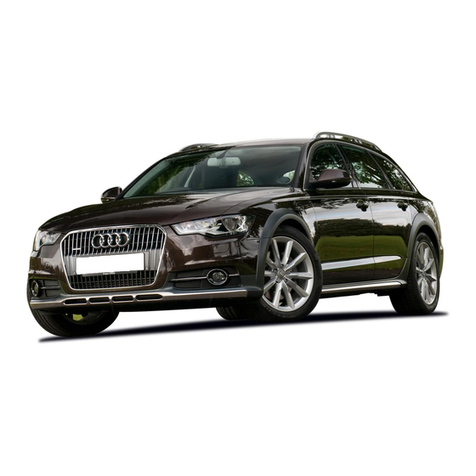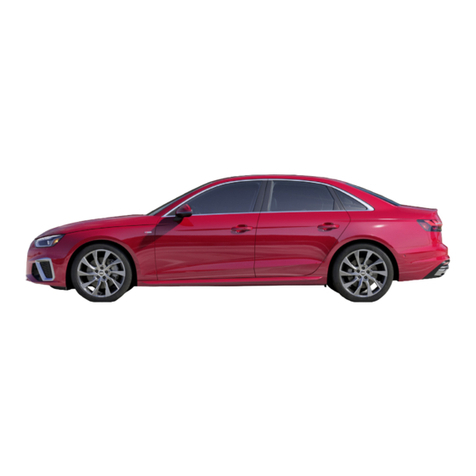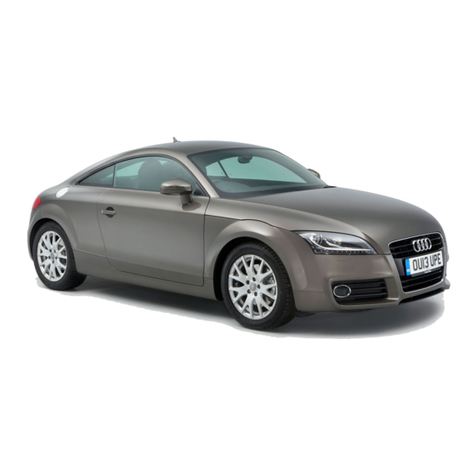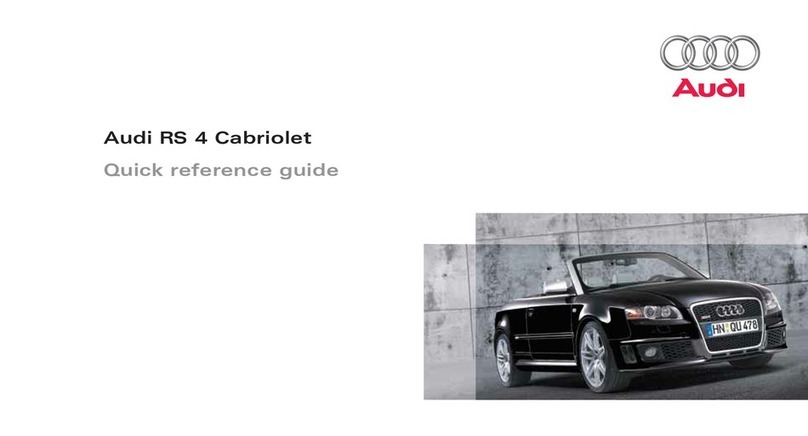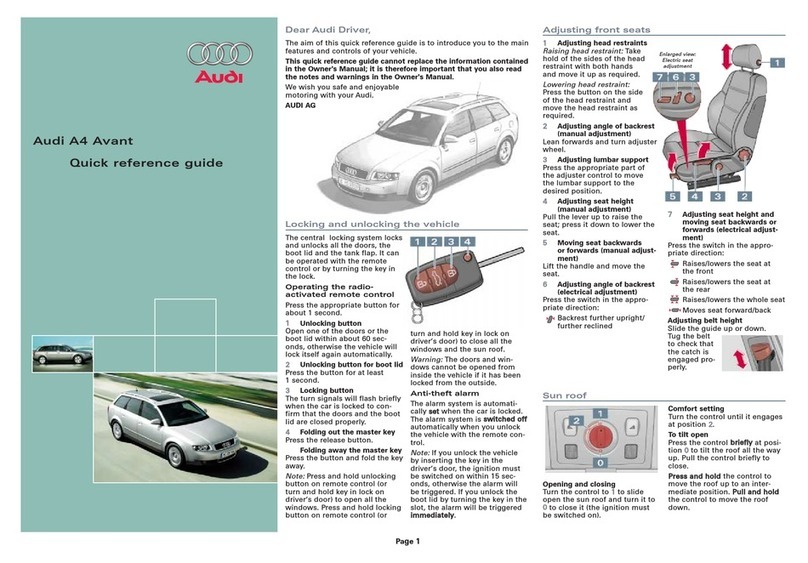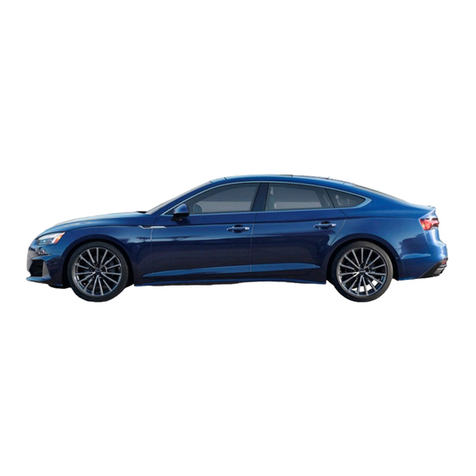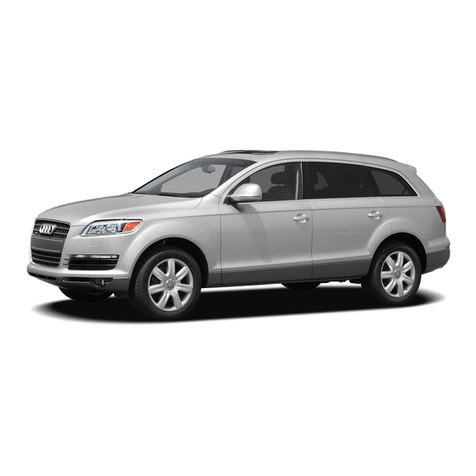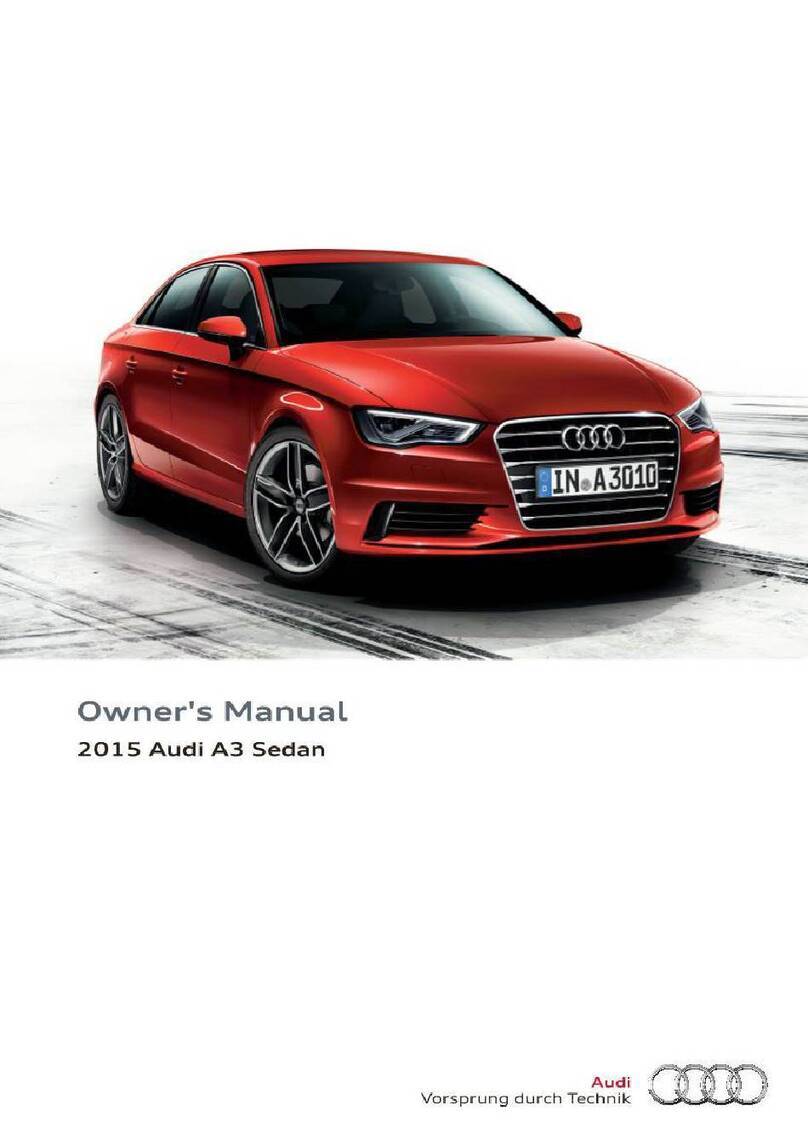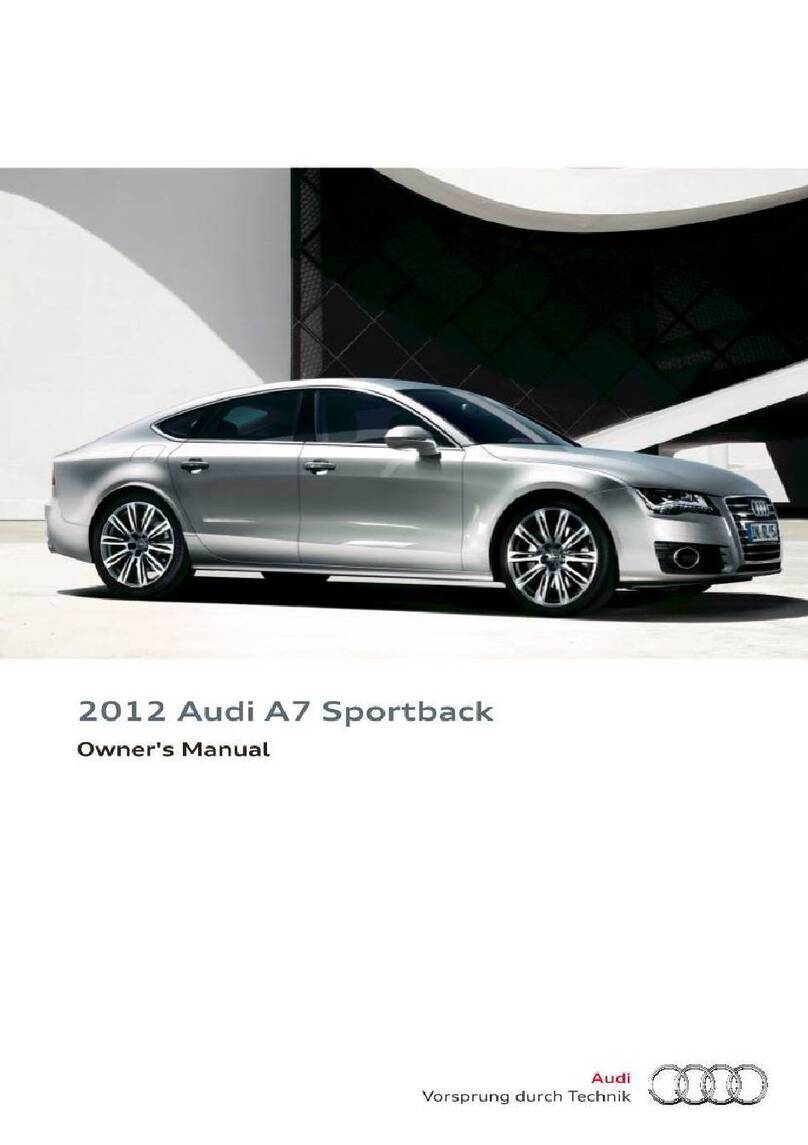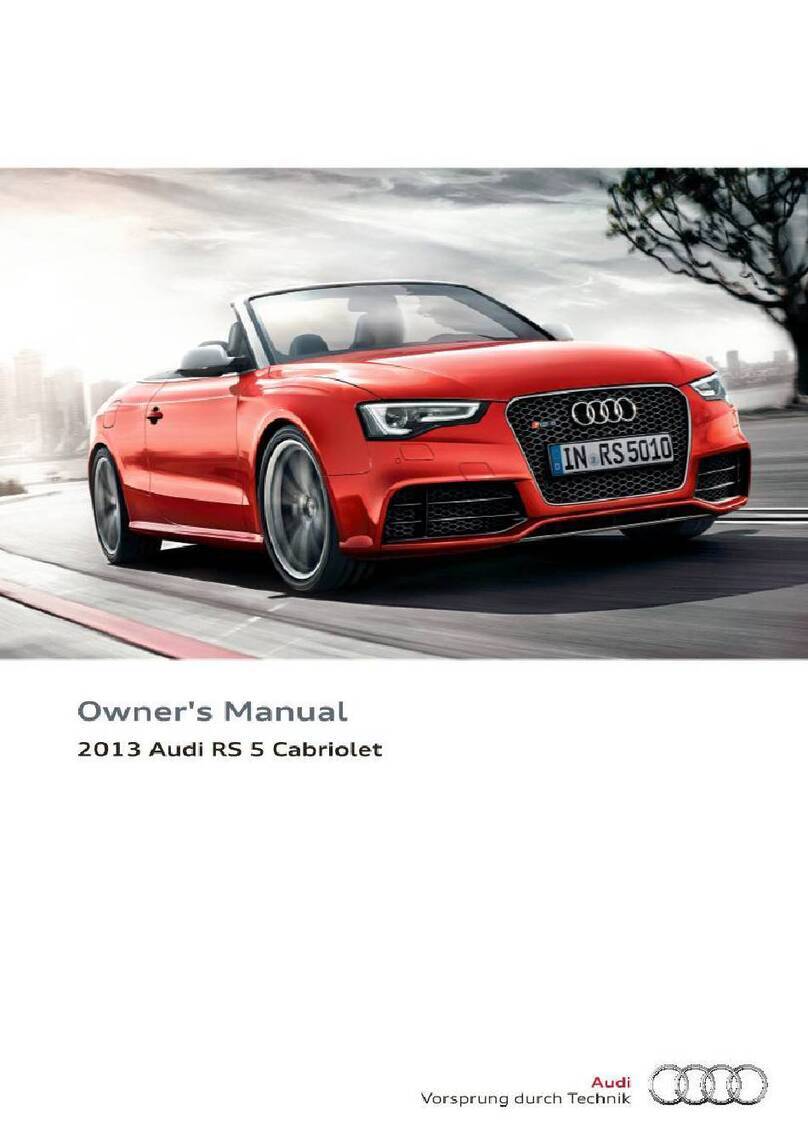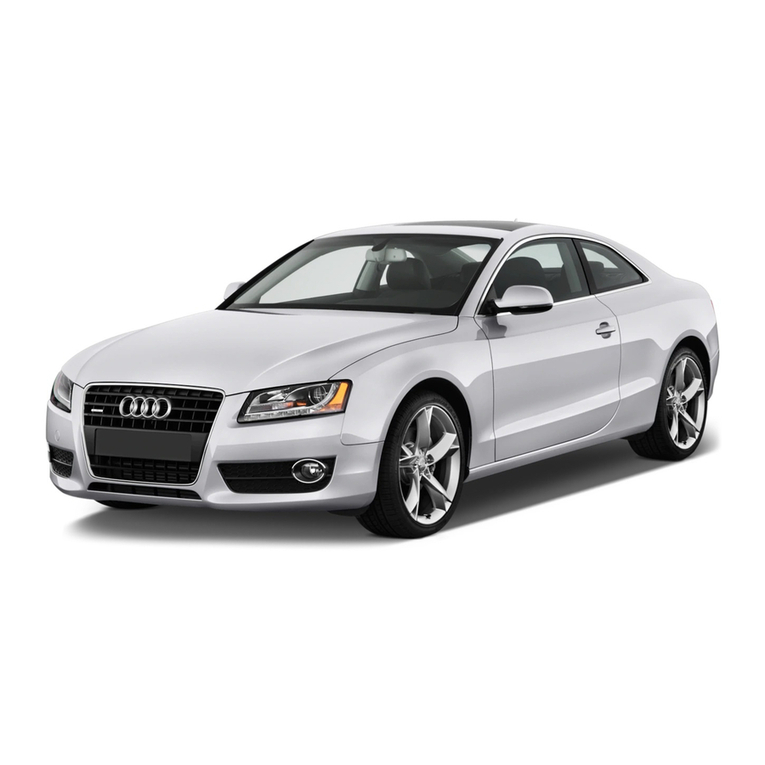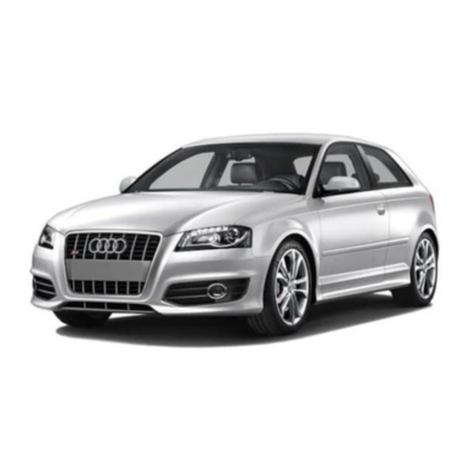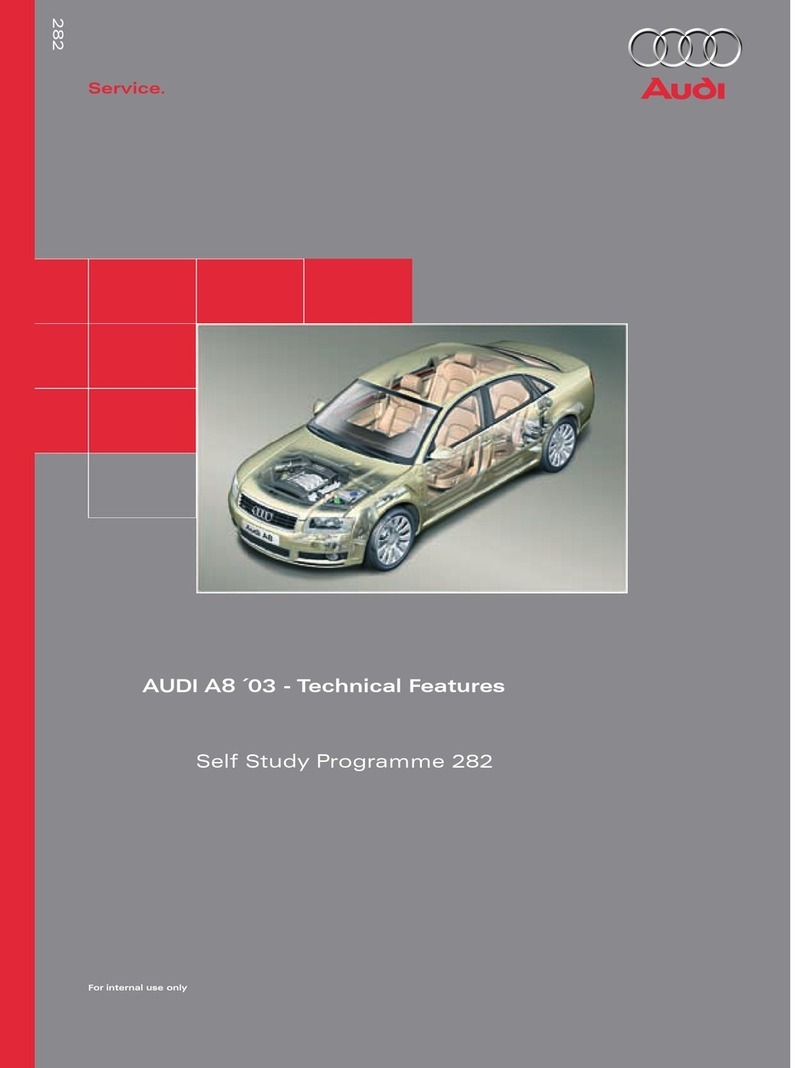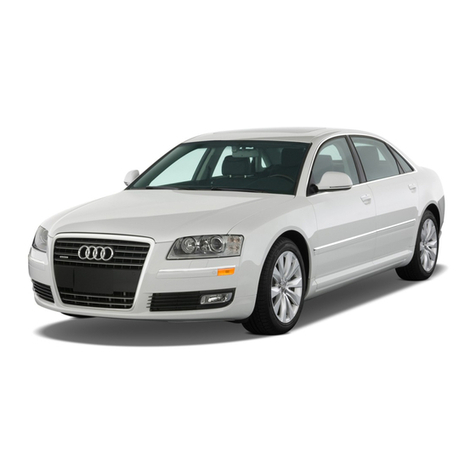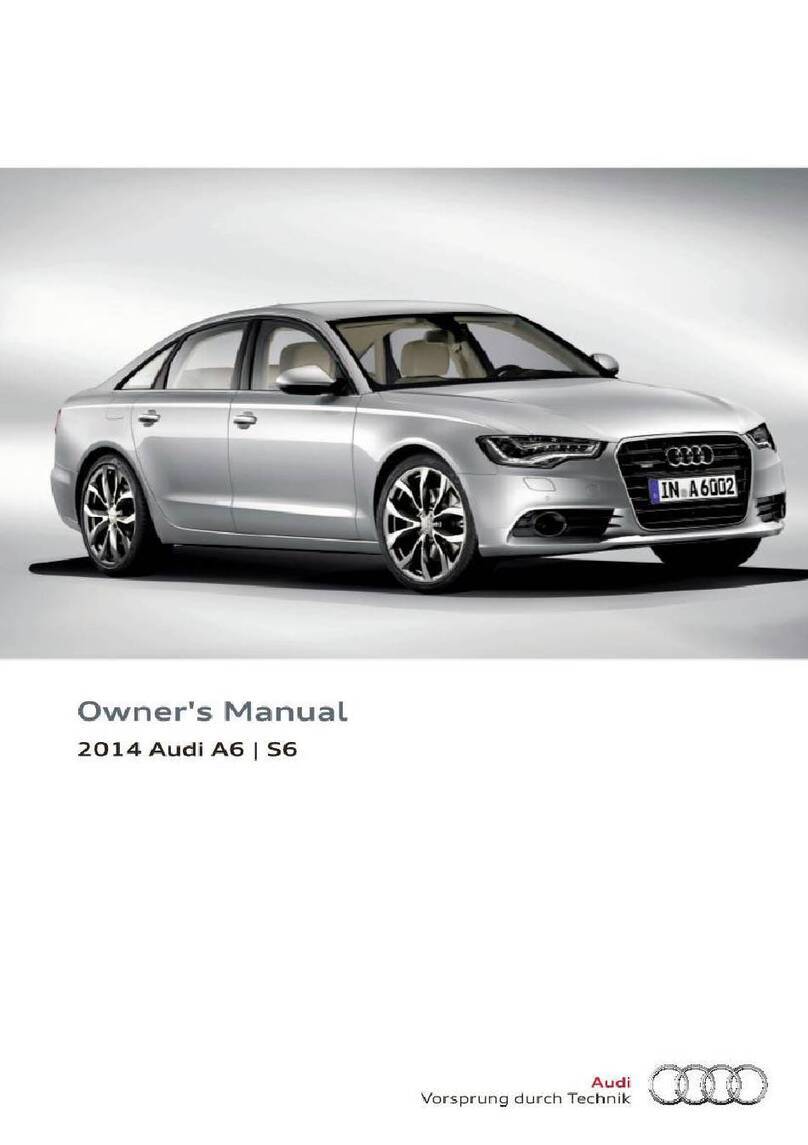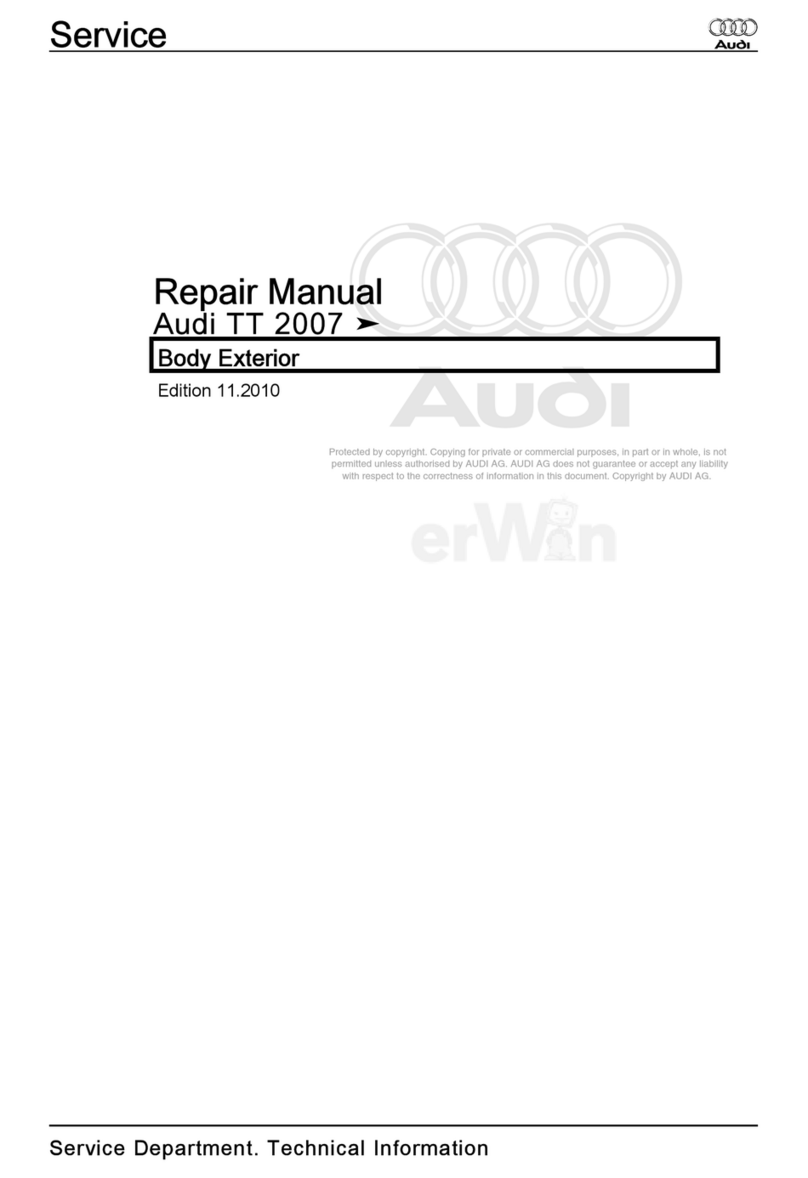
The new Audi A5
The new Audi A5 features a number of impressive
innovations in the area of convenience electronics.
One of the most striking of these is the new ignition
key. This key is pushed into the electronic ignition
lock, and the engine is started with a push move-
ment of the key instead of a turning movement.This
new concept replaces the button-operated folding
key.
The ignition key houses an emergency key which
allows the vehicle to be opened mechanically in
case of failure of the vehicle electronics. The igni-
tion key can also be used to lock the vehicle
mechanically if the key removal lock prevents with-
drawal of the key from the ignition lock.
The new Audi A5 comes with an extensive range of
optional equipment. Many systems previously
exclusive to the larger models A6, Q7 and A8 are
now also available on the A5.
Systems include the "Advanced Key" and the front
and rear acoustic parking system, which is available
with an auxiliary visual display under the name
"Audi Parking System Plus". The acoustic parking
system can also be ordered in combination with a
rear-view camera under the name "Audi Parking Sys-
tem Advanced", this being the full-expanded version
of the acoustic parking system.
The wide range of optional equipment on the Audi
A5 also includes a lane change assistant system
which assists the driver when changing lane by
means of an indicator light in the exterior mirrors.
However, the absolute highlight on the new Audi A5
is the Audi Lane Assist system, which will be availa-
ble for order in 2007. In June 2007, there will be a
separate self-study programme about this system,
which explains why the system is not described in
this self-study programme.
393_034
393_042
393_046
